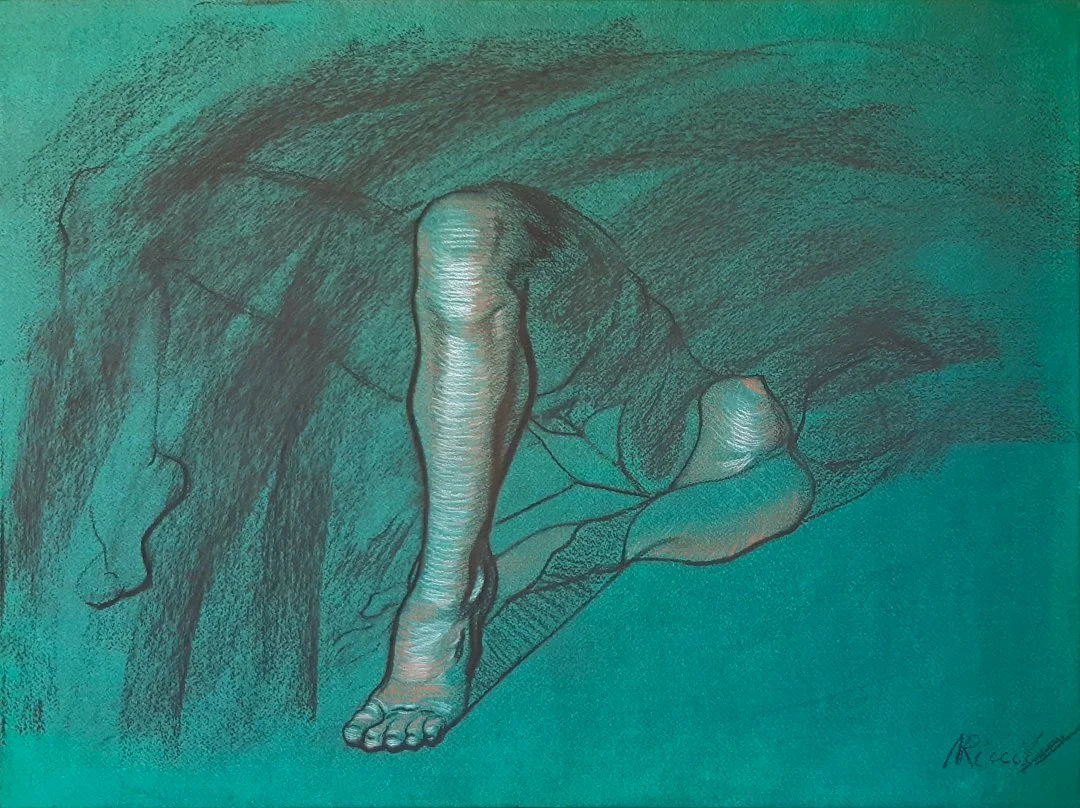Blog
Half chaos. Half order. Half bridge in between.
Here is a problem I’ve been trying to solve: How to bring life to my drawings?
‘Half Bridge’, 60x45cm charcoal, sanguine & chalk on hand toned paper. May 2023.
Here is a problem I’ve been trying to solve: How to bring life to my drawings? How do I preserve a sense of comprehensive structure, of anatomy, without turning the drawing into a lifeless, uninteresting piece of junk? What are the design choices that will act as a bridge between sufficient safe, predictable, life preserving order, and enough dangerous, spontaneous, life bringing chaos?
One of my biggest sources of inspiration is, unsurprisingly, the work of Shane Wolf. Looking at this drawing, it is easy to see where the use of the trois crayons technique on a colored background came from. My technique, however, needs improvements, and my backgrounds need more chaos.
Through the years (mostly just the last one to be honest), I’ve been slowly adding more and more design techniques to my work. Values, edges variations, line weight etc. But, one tool, present in Shane Wolf’s drawings, was, most of the time, missing in my toolbox: Hatchings. A fantastic tool that helps with both structure and dynamism. These many lines carry with them a lot more life, a lot more energy, than a plain shading (not that the latter doesn’t have its purpose though), and create the illusion of wrapping around the form. Two birds with one stone.
When it comes to the broad willow charcoal strokes, they are akin to those you could find in Lane Brown’s figure drawings, for exemple. They look chaotic. They bring a whole lot of energy to the table. They reinforce the movement of the pose. They contrast with the well rendered part of the drawing etc.
I’ve got to tell the truth though. The whole chaos and order thingy is a lie. The truth is that the more you repeat some movements, the more inconscious they become. You know what movement produces what. You know how your tools will react. How your paper will react etc. You just don’t think about it. That’s where the spontaneity comes from. Unconscientized, autonomous movements. It is what allows you to drive a car without going insane. And it is what allows an advanced artist to make something that LOOKS spontaneous. That’s all there is, with enough practice. Techniques that look chaotic, and spontaneous, and full of energy, and techniques that look controled, and precise, and restrained.
Really, if you are looking for true chaos, you need to look at what people with zero practice do. Or to what young children do. Or to what severly, mentally ill people do.
PS: ‘Half bridge’ is the name of the pose :).



